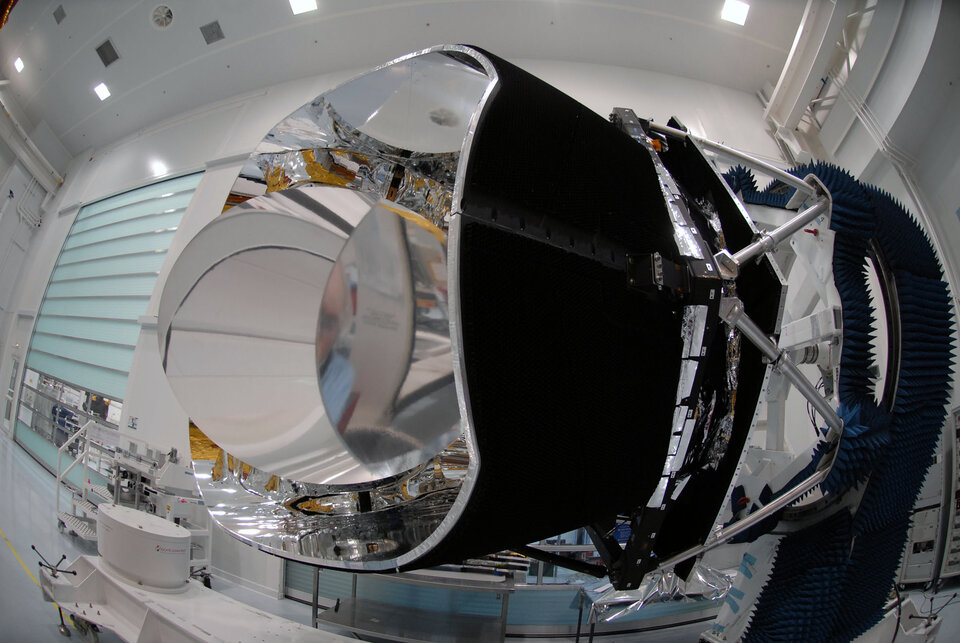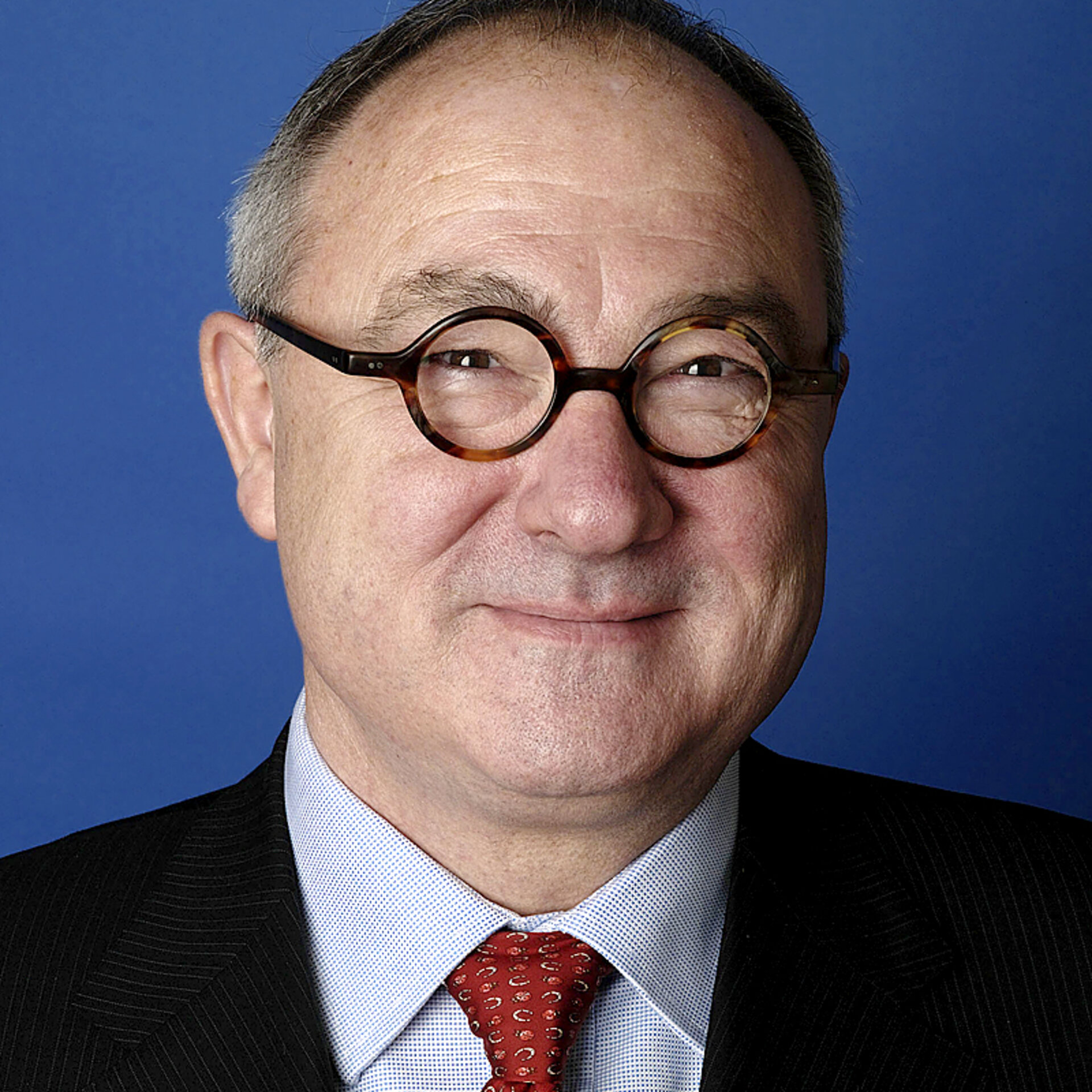ESA looks to the future
This article first appeared in Physics World's focus issue on Big Science. Jean-Jacques Dordain, director-general of the European Space Agency, sits down with Mark Williamson, to explain how international partnerships can bolster “big science”.
Many would argue that space science qualifies as “big science”. Not only are missions becoming more complex and incorporating technologies that need to be developed from scratch, but they also rely on international participation for know-how and funding. Indeed, space missions can be expensive, with a typical flagship probe coming with a price tag of a billion euros or more. Their complexity becomes even more obvious when you realize that they have to operate reliably in the space environment without physical maintenance or intervention.
The European Space Agency (ESA) spends more than €500m per year on science and one of its recent flagship missions – consisting of the Herschel and Planck probes – was launched on a European Ariane 5 rocket in May 2009. Yet despite the shared launch and operational expenses, the three-year Herschel mission still cost some €1.1bn and the 30-month Planck mission around €700m.
The Herschel Space Observatory carried a 3.5 m-diameter primary mirror and still is, according to ESA, “the largest, most powerful infrared telescope ever flown in space”. Its two imaging spectrometers – the Photoconductor Array Camera and Spectrometer, and the Spectral and Photometric Imaging Receiver – together covered wavelengths of 55–670 μm, while a highresolution spectrometer covered sub-bands within this range. All three instruments were cooled below 2 K inside a cryostat filled with liquid helium – the spacecraft’s life-limiting factor – that was finally exhausted in April.
Planck, meanwhile, is Europe’s first space mission to study the cosmic microwave background (CMB) – the remnant radiation left over from the Big Bang. It does this using a 1.5 m telescope and two helium-cooled detectors – one operating at three frequencies in the 30–70 GHz range, with the other working at six frequencies between 100 GHz and 857 GHz. Jean-Jacques Dordain, director-general of ESA, stresses the engineering achievements of the missions.
I have to manage the obvious cash problem but we can still do a lot of science
“Cooling the detectors to 0.1 K took a lot of technical progress,” he says, “but it was worth it as project scientists tell me that they have 20–30 years of future
work based on Planck data alone.”
Arguably, one of the most surprising findings from Planck was that temperature fluctuations in the CMB at large “angular scales” do not match those predicted by the standard model of cosmology – a discovery that François Bouchet of the Institut d’Astrophysique de Paris has characterized as “finding that parts of the foundations of your house are weak”. In addition, Planck data also set a new, lower value for the rate at which the universe is expanding – which implies that the universe is 13.82 billion years old. Planck may have a lot more to give, with Dordain indicating that scientists hope that its data will provide “some indication
of what was before the Big Bang”.
Building partnerships
ESA is faring surprisingly well in the era of austerity, especially given that several of its member states are suffering budget cuts and debt crises. Although Spain and Italy have reduced their support, the recent increase of the UK’s contribution by 25% per year to around €300m and additional money from new members Poland and Romania have minimized the effect. “We came out of the November 2012 ministerial meeting with €10bn [over several years], which is not so bad,” says Dordain. As part of this, ESA’s science budget is secured at just over €500m per year for the next five years which, although it does not account for inflation, is sufficient to fund a decent science programme. “I have to manage the obviouscash problem,” admits Dordain, “but we can still do a lot of science, and I am committed to further improve the efficiency of ESA’s operations.”
ESA is an international organization – having 20 member states – and it has a long history of international co-operation, which the agency has often used as a mechanism to increase value for money. An example of this is the long-suffering €1bn-plus ExoMars mission, which has proved to be a financial challenge for Europe since it was officially approved in 2005. The most significant upset was undoubtedly the withdrawal of NASA last year – ostensibly for budgetary reasons – leaving ESA to sweet-talk Russia into providing a launch and a landing vehicle for the 2018 mission. Dordain confirms that he has “always considered ExoMars to be very important for Europe”, but admits that changing partners “has increased the burden for ESA”.
Despite this, Dordain remains keen on maintaining a broad international co-operation, adding that ESA is also “co-operating with China on science missions”. Indeed,
Dordain believes that ESA is “well regarded by the Chinese” because of its role in facilitating China’s DoubleStar mission – the country’s first international collaboration in space science. The twin DoubleStar spacecraft were launched in December 2003 and July 2004 to investigate the effect of the Sun on the Earth’s magnetosphere, using a spare instrument from ESA’s Cluster mission. ESA also supported China’s Chang’e lunar missions by providing tracking facilities.
The future of big science in space
So where is “big space science” for ESA heading in the next couple of decades? Dordain identifies three main areas of interest: large-scale questions about the universe; planetary astronomy; and the study of planet Earth itself. ESA’s Planck mission is part of the first category and Dordain is clearly proud of its accomplishments and the ability of its data haul to feed the science community for many years to come.
As far as solar-system exploration is concerned, Dordain points out that Europe has spacecraft orbiting Mars and Venus, and, in 2005, performed the first ever atmospheric entry and landing on Titan with Huygens. “We will go to Mercury with Bepi-Colombo [in 2020] and we will dock to a comet next year,” he says. The aim of the latter mission – dubbed Rosetta – is to rendezvous with the comet 67P/Churyumov–Gerasimenko on 14 November 2014. Dordain confirms that it is “not so much to land on the comet, because of its small size but to execute more of a docking with the comet”. It will be another first for ESA science.

In Earth science, meanwhile, ESA will launch the Biomass mission – possibly in 2020 – as the seventh “Earth Explorer” mission, a series designed to investigate the Earth and its environment, monitor physical processes and assess their contributions to climate change.
Dordain is adamant that ESA’s role is not science per se but rather the development of space-based technologies to do the science. He has a clear understanding that it is not the director-general or other agency leaders who decide what type of missions to conduct but rather researchers themselves. “The process is driven by scientists,” says Dordain. “Researchers want to look at the origin of the universe or the formation of the stars…and we have to invent the technology to do that.”
Dordain is clear that big science “is part of the progress in knowledge”, adding that “there is no future on planet Earth without such progress”. Indeed, it is clear that Dordain spends a good proportion of his time listening to scientists and has a good understanding of what drives science. He recalls when some 40 Nobel laureates and several European research ministers came together at a European Union research council conference in 2000 that was held in Lisbon. “The message of the Nobel-prize winners to ministers was ‘do not invest in objectives, invest in brains’,” says Dordain. “I think that was an important message.”




